
13 Jun, 2017
Mekong Tourism Forum 2017: Prospering, but for what Purpose?
Luang Prabang, Laos – One of the most powerful messages of the Mekong Tourism Forum held in this UNESCO world heritage site between 7-9 June was the contrast between the core argument advocated by the keynote speaker and the rest of the programme content. While Anna Pollock, the UK-based Founder of Conscious.Travel, flagged clear warnings about the impact of unbridled growth, the rest of the MTF was designed almost entirely to generate unbridled growth. This marketing vs management chasm casts serious doubt on the ability of emerging Mekong secondary destinations to learn from history and avoid making the same mistakes as their primary bigger brethren.
The MTF 2017 marked a coming of age for yet another ASEAN and Mekong subregion jewel-in-the-crown destination, with a record turnout of 370 delegates worldwide. Backed by the Asian Development Bank, the MTF’s main behind-the-scenes backer, Mr Jens Thraenhart, executive director of the Mekong Tourism Coordinating Office, revamped the structure and organisation of the MTF to significantly enhance its content and value-for-time factor. Free of charge for industry professionals, it featured extensive opportunities for discussing substantive issues. It was also the biggest convention held in Luang Prabang. As no hotel had adequate facilities, the main plenary sessions and the Gala Dinner were held in the auditorium of the Central Bank branch.
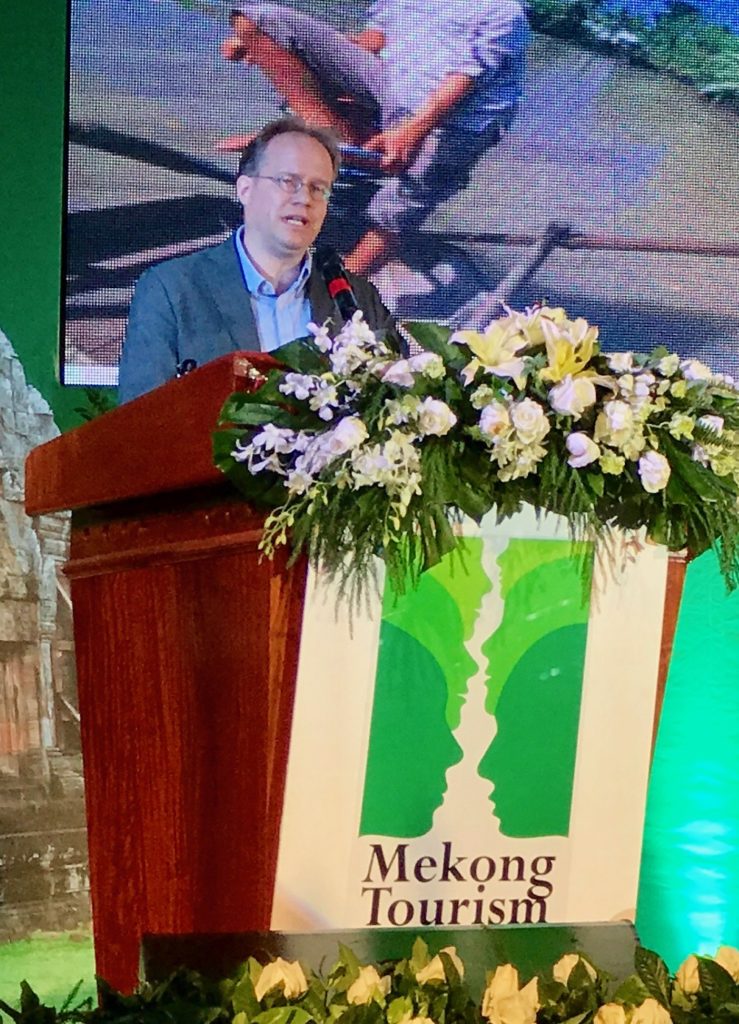
MTCO Executive Director Jens Thraenhart opening the MTF 2017
The MTF has come a long way since 1997, only 20 years ago, when the first Agency for Coordinating Mekong Activities was set up in Bangkok following the first Mekong Tourism Forum alongside the PATA annual conference in Pattaya in 1996. Since being revived in 2010, the MTF has been held in nearly all the subregion’s secondary cities: Siem Reap, Pakse, Chiang Rai, Guilin, Mandalay, Da Nang and Sihanoukville.
Tourism growth has followed quickly. According to the 2016-2025 Mekong Tourism Strategy, officially released at the Luang Prabang MTF, arrivals in the subregion have more than doubled from 23.1 million in 2005 to 57.8 million in 2015 at an annual growth rate of 10.6%. More unbridled growth is yet to come. The target is for 77 million in 2020 and 95 million in 2025. Inbound airline seats have risen from 608,545 in 2014 to 758,613 in 2016. In 2011, 54,000 buses and 97,000 personal vehicles used only the second Friendship Bridge linking Mukdahan in Thailand to Savannakhet, Lao PDR.
There is no shortage of “growth” stats. By contrast, the Mekong Tourism Strategy does not cite a single statistic on the environmental, social and cultural impact of this growth. None.
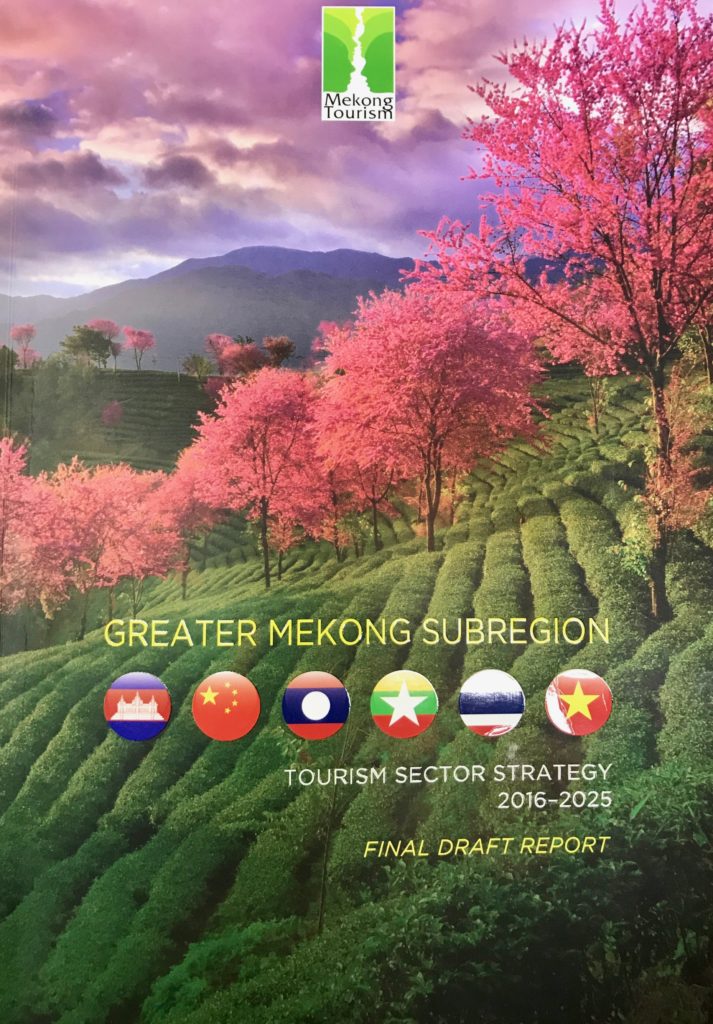
This glaring omission is exactly what keynote speaker Anna Pollock flagged in her speech. She began by citing her reputation as a “trouble-maker consultant” who goes against the grain of conventional wisdoms in travel & tourism. Urging the industry to take the big picture approach, she said it is long overdue for travel & tourism to “see your connection with everything else that is going on Planet Earth.” Invoking the MTF 2017 theme, “Prosper With Purpose,” she voiced concern about the industry’s fixation with getting bigger. “Every tourism development strategy I have read has had one consistent, which is to attract more visitors. But what is the purpose? Why are they doing this? Are they delivering more visitors or more value?”
Calling on the industry to shift its focus to surviving not as a sector but as a species, she urged delegates to dump the five P’s of Philip Kotler’s marketing theories and replace them with another set of five P’s: Perspective, People, Place, Power and Purpose. She said, “Everything we do is the result of how we see the world, and the way we see the world is not serving our purpose.” She quoted one U.S. government official as saying that the world is now in a “VUCA” age — Volatility, Uncertainty, Complexity and Ambiguity. In that context, she asked, “How do we manage the tourism tsunami? Nobody has quite figured out how to do that.”

Out with the old…..
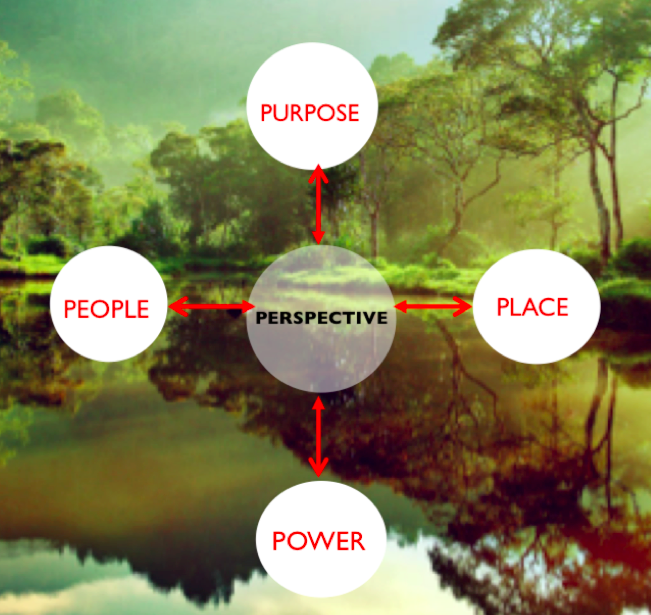
….and in with the new..
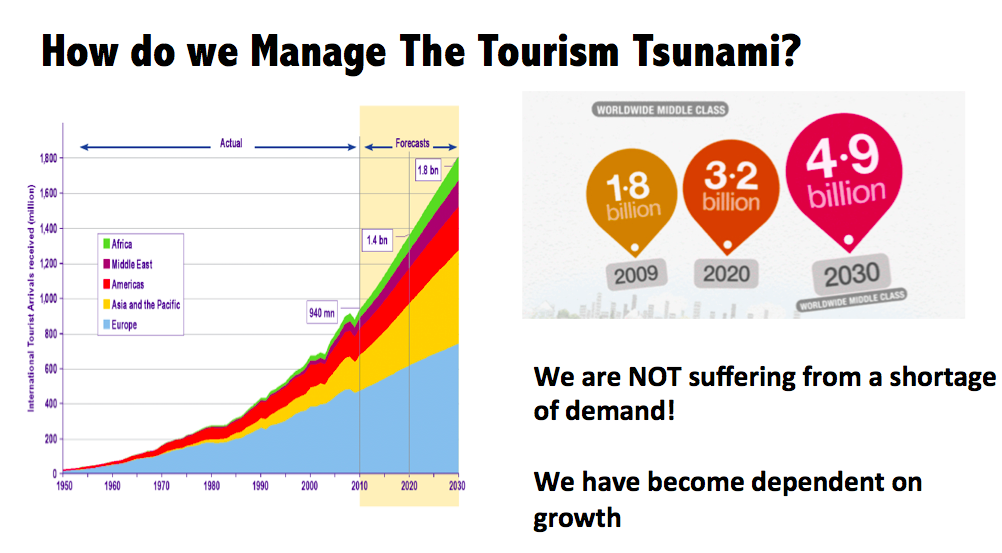
One of the most important slides from Mrs Pollock’s presentation.
Although her powerful speech sought to raise the industry’s prevailing mental level, there was very little in the rest of the MTF programme to indicate that travel & tourism is taking any of it seriously – or plans to. The GMS Tourism Strategy Paper for 2016-25 projects that an estimated US$58.7 billion is to be spent on dozens of airports, highways, cross-border checkpoints, marketing, cultural and natural heritage sites, river cruising packages, and much more.
It’s full steam ahead.
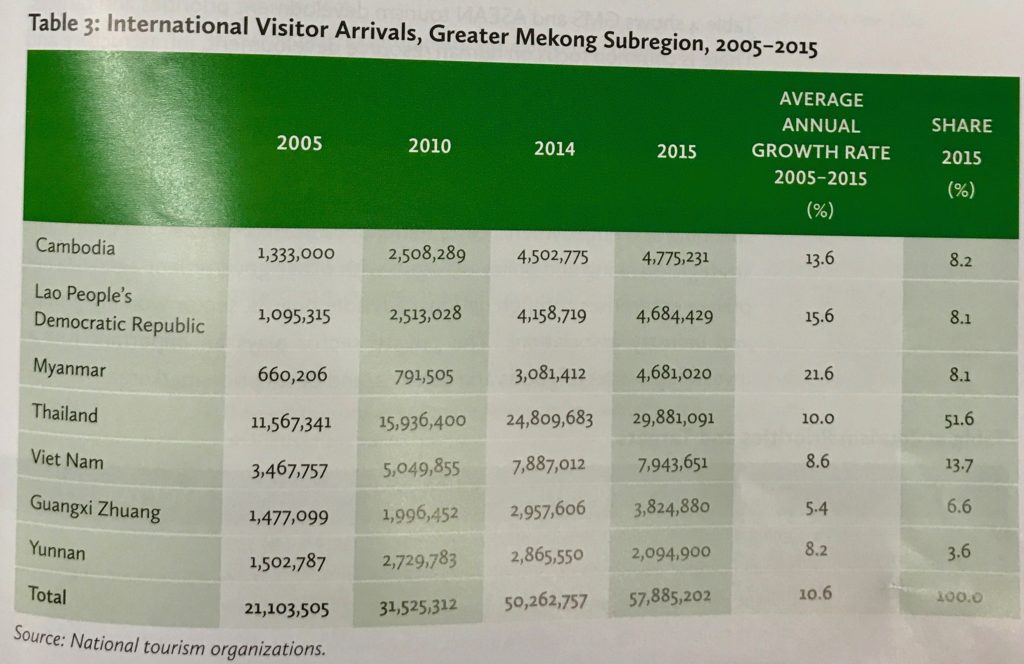
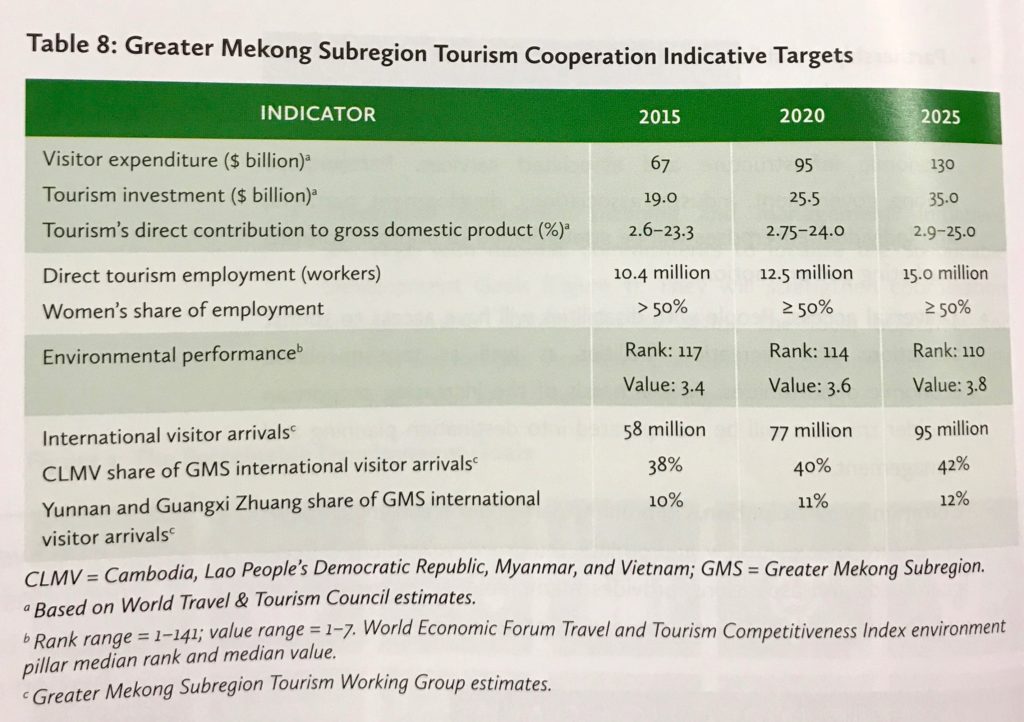
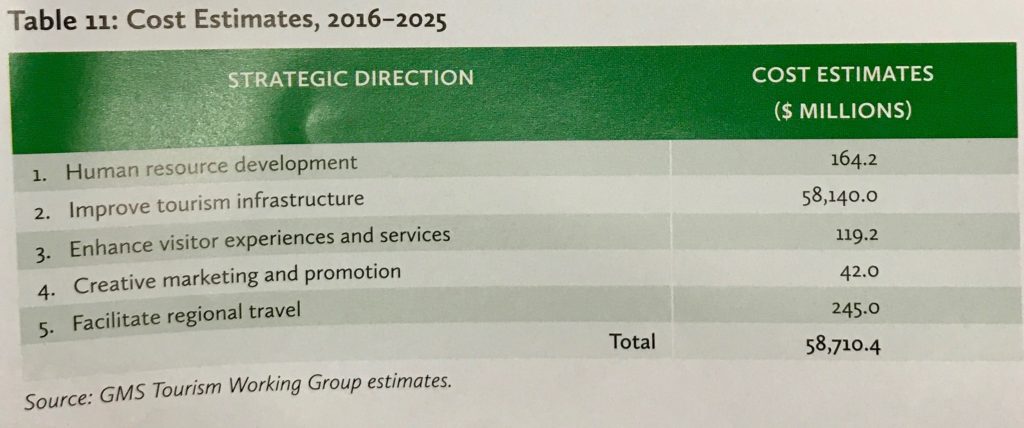
A lot of this ongoing growth, and its impact, is plain to see in Luang Prabang itself.
Designated a UNESCO World Heritage Town in December 1995, LP is already getting more tourists than its local population. Provincial governor Mr. Khamkanh Chanthavisouk said it has a population of 438,208 people in 12 districts. In 2016, tourists totalled 627,315, of whom 455,050 were foreign visitors. Total annual revenue from tourism was estimated at over US$195 million.
Tourism and farming are the two main economic pillars. However, Mr. Khamkanh, in a speech read on his behalf by Dr Soudaphone Khomthavong, Deputy DG of Luang Prabang Tourism, said that tourism, not farming, is the top priority of the provincial social-economic development plan. She said, “To develop tourism in sustainable way, we have prioritized the facilitation and attraction of domestic and international investors to invest in Luang Prabang and facilitate tourism and trade cooperation with GMS countries and other countries, which we believe will make Luang Prabang become an even better tourist destination in the future.” The heritage city has also received the Wanderlust Travel Best City Award and is now preparing to become an ASEAN Green City.
However, LP is already plagued by the same haphazard, Jekyll-and-Hyde development as most of Asia’s emerging tourism cities. The numerous world-class properties catering to tourists are havens of elegance, style and design. But their perfection stands in stark contrast to the rest of the city. The main UNESCSO heritage zone catering to tourists is in relatively good condition but the areas where the local population resides have no sense of place nor character. Garbage bins are few and far between, even in the main UNESCO area, with the result that litter is strewn around in quite a few places.
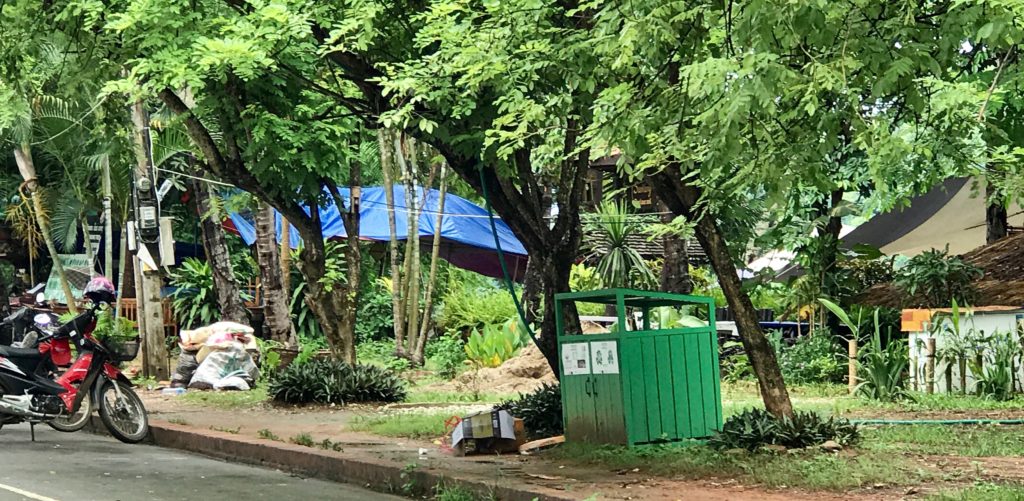
Shoddy landscaping on the river bank in the UNESCO World Heritage zone, right in front of my hotel.
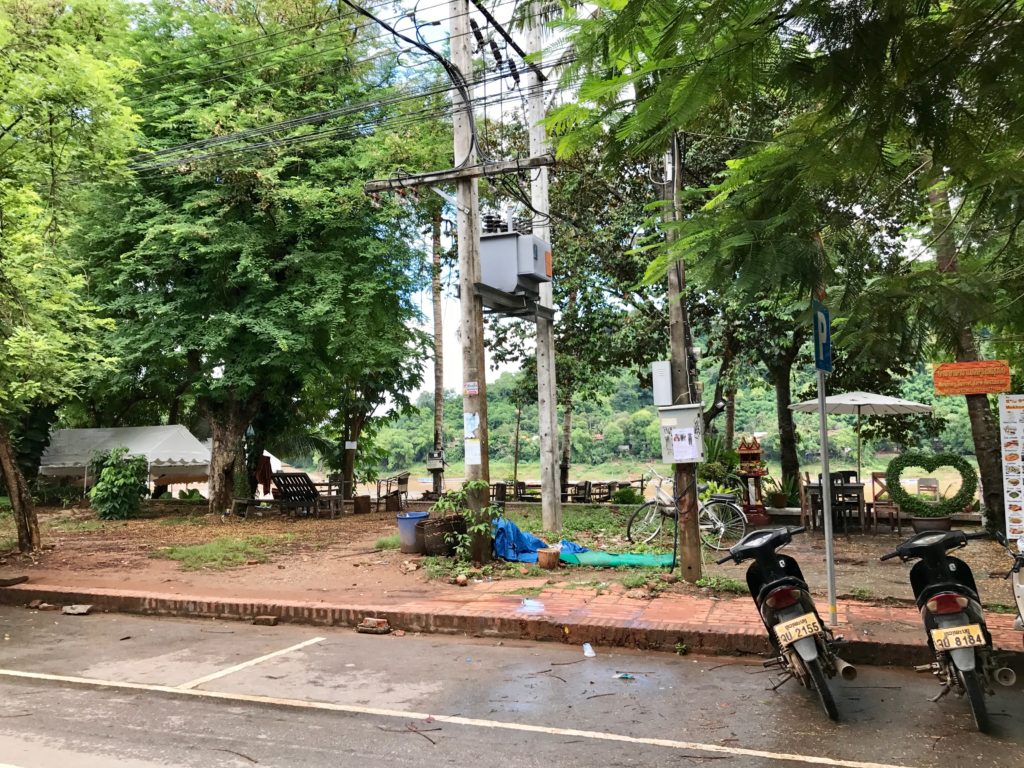
Poor footpaths and ugly electrical wiring line the river-bank.
It’s going to get worse. The room count is already more than 2,000. More hotels are coming up. The completion of the Kunming-Singapore rail-link with China will see a deluge of visitors. In the surrounding mountains, major signs of heavy-duty deforestation are clearly visible from the air. The manager of one magnificent hotel with superb views of the heavenly Mekong river admitted that the hotel’s kitchen water is dumped untreated into the river. Raw sewage is piped into the city’s main sewerage system but the capacity of both the city’s garbage and sewage systems are under strain. The city area has no traffic lights at intersections, but it is only a matter of time before that changes. As more hotels come up, more people will be needed to staff them and the supporting products and services. This will be good economically, but it will also mean more garbage, sewage, urban sprawl, consumption of natural resources and, eventually, deforestation.

Signs of growing deforestation more than apparent from the air.
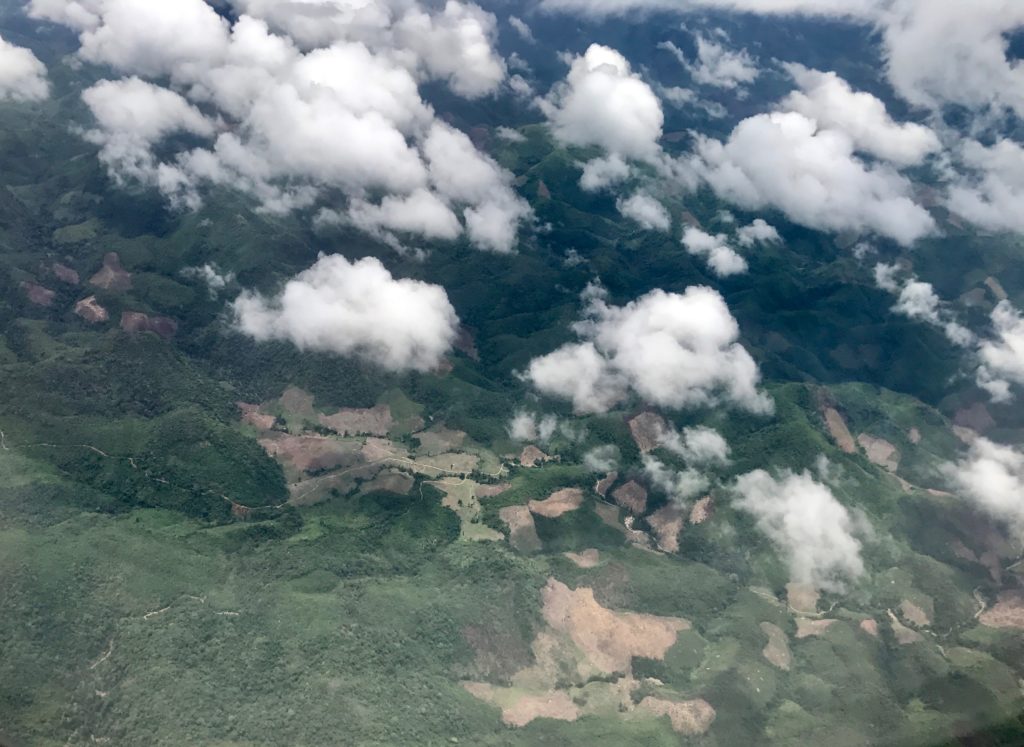
Signs of growing deforestation more than apparent from the air.
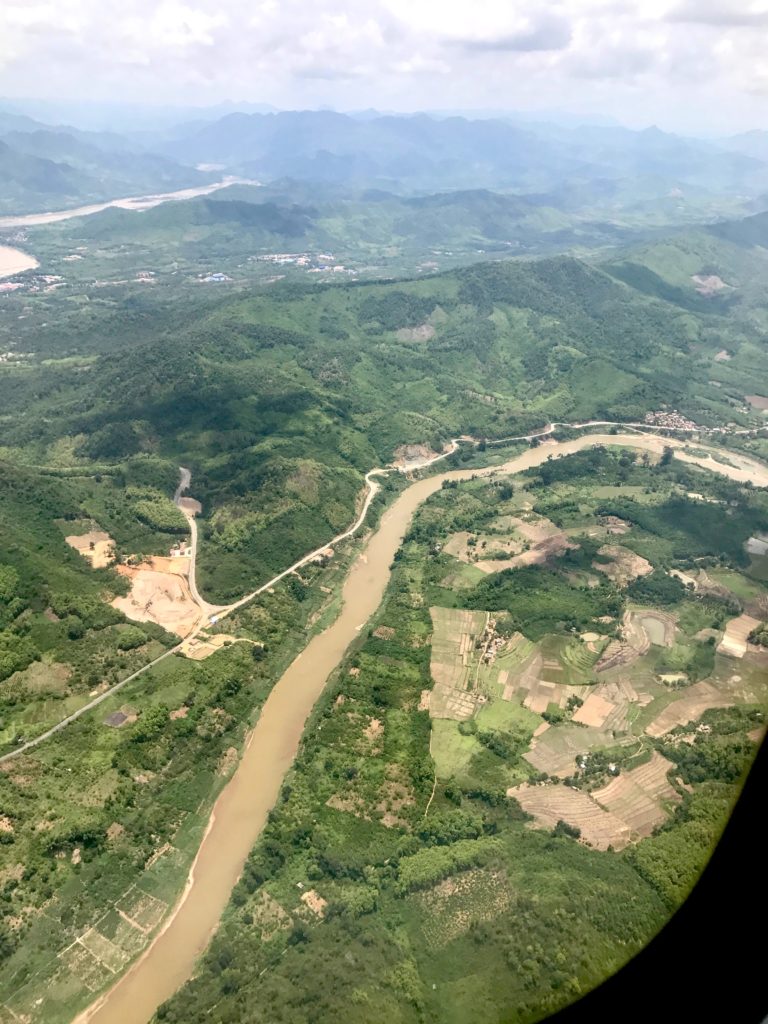
Signs of growing deforestation more than apparent from the air.

Laos is on its way to becoming like Thailand, in the foreground, left side of the Mekong River. Laos on the right side is still much more green by comparison, but only at the moment.
On paper, the Mekong Tourism Strategy says all the right things. “GMS tourism stakeholders recognise that high tourism intensity can undermine inclusive economic growth, degrade the environment and diminish interactions between visitors and hosts. To address these challenges GMS national tourism organisations and the GMS Tourism World have increased their efforts to promote more competitive, balanced and sustainable tourism development.”
The budget allocations tell a different story. Only three of the 59 listed projects are devoted to projects for waste water treatment, sewerage and garbage with a total cost estimate of US$650 million. By contrast, development of 15 airports in the region is to take up US$27.3 billion, with another US$18 billion for the Singapore-Kunming rail link.
Moreover, addressing environmental infrastructure issues does not come under the direct purview of the tourism sector. It comes under the GMS Urban Development Strategic Framework and the Green City Action Plans which focus on developing and upgrading urban roads and drainage, flood protection, solid waste management and waste-water treatment systems, water supply, public parks and green space, urban markets and tourist information centres.
Plenary sessions during the MTF, included two moderated by this editor, dwelt on this imbalance in detail. Taking up Mrs Pollock’s argument, I challenged panelists on the issue of management and the need to learn from the mistakes of “other regional countries.” In response, panelists used words like “enforcement”, “education”, “controls”, and “trust” several times. In his briefing, the ADB’s chief point-man for the GMS tourism strategy, Mr. Steven Schipani, Senior Portfolio Management Specialist, twice cited tourism “management” as being the need of the hour.
The heart is in the right place and the wish-list is long but no-one is optimistic that concrete results will follow.
The same pattern was obvious in the breakout sessions. Mr. Thraenhart, the MTCO executive director, revamped this year’s format to make it much more inclusive. Rather than sitting in one hotel, delegates fanned out to the multiplicity of restaurants, gardens, hotels and attractions emerging in Luang Prabang. Each group met in a separate location and enjoyed energetic, personalized interaction with eminent speakers. However, in terms of subject matter, it was more of the same. Only one of the 16 breakout session topics was devoted to Clean and Green cities.
Ditto with another MTF innovation, the Mekong Innovative Startups in Tourism (MIST). Just about every industry event is now parading a beauty contest of start-ups before a panel of gawking judges. Almost all startups are techno-oriented and designed to “Prosper With Purpose” by attracting funding and generate growth. Not a single one of the MTF presentations focussed on how to “Prosper With a Higher Purpose,” better manage the environment, reduce water consumption, food waste and garbage, meet the UN Sustainable Development Goals, enhance peace, friendship, understanding and socio-cultural-ethnic harmony amongst the multiplicity of Mekong races and religions.
Neither do any of the young millennial upstarts understand the rich history and heritage of the region. I spoke to a number of them. Not a single one knew what the name Mekong meant or where it came from. If they did, they would have noticed that the first syllable “Me” is actually a bastardised version of “Mae” which means “Mother” in many Asian and global languages. That cements the picturesque river’s status as a source of life and caretaker with a “higher purpose” emphasis on sustenance, well before sustainability. This is what Anna Pollock was alluding to.
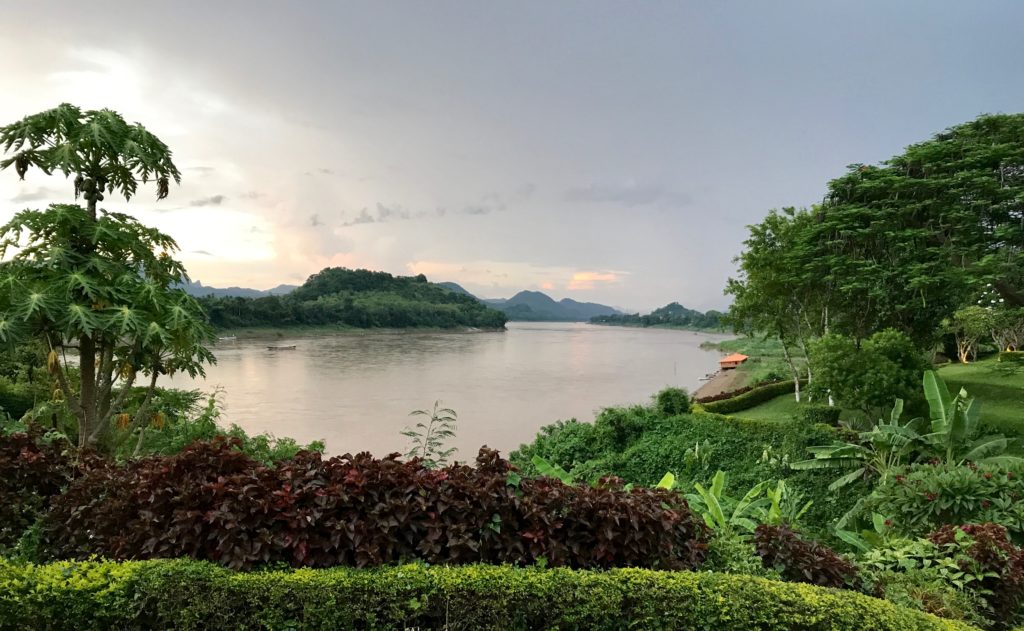
The pristine grandeur of the magnificent Mekong at its best, and as it should be.
Perhaps the biggest sign of regret is coming from Thailand, the country which is at the forefront of both schools – how to market tourism as well as how to mismanage it. Thailand is now learning from its mistakes. For the first time, the Thai tourism industry has included the Sufficiency Economy concept of the late King Bhumibhol Adulyadej on the list of projects of the 2016-2025 Mekong Tourism Strategy. It was not listed in the 2005-2016 strategy.
During the revered monarch’s lifetime, Thai tourism milked Royal events such as the King’s auspicious 6th and 7th cycle birthday anniversaries for every cent it could get in marketing dollars. The goal was short-term growth (aka more visitor arrivals). The Sufficiency Economy was ignored. Now that the revered monarch has passed away, the industry is waking up to the importance of his far-sighted vision as a means of “Prospering With a Higher Purpose”.
See my dispatch: How Thai Tourism has Failed a Great King
In many ways, the MTF 2017 showed the continued parochial level of thinking in an industry that claims to be full of thought-leaders. The reality is that travel & tourism sees its natural resources, history and heritage as mere cash-cows. It neither respects them, nor is it inclined to learn the lessons of history. Those who offer an alternative perspective, such as Mrs Pollock, and indeed journalists such as myself, are branded “trouble-makers.” Like the late King of Thailand, the reality is dawning on them that we were right all along.



Liked this article? Share it!